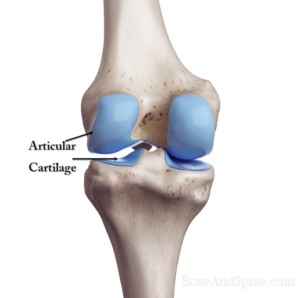
Those who are in love with running vouch for it as a way towards world peace. Running brings with it a lot benefits such as it helps to burn fat, improves cardiovascular health, increases brain power, alleviates negative emotions. To top it all, we don’t need any fancy equipment to run, just a good pair of running shoes is needed. However the detractors of running often point out that running harms the joints, specially knees. In this post let’s address their doubts.
Does running cause wear and tear in the knee ?
One of the most common causes of wear and tear is degeneration of cartilage with age.
What is a Cartilage and what is its function ?
Cartilage (cartilaginous tissue) is a resilient and smooth elastic tissue, rubber-like padding that covers and protects the ends of long bones at the joints. Articular Cartilage or Hyaline Cartilage which is present in our knee joint forms a very low friction, 2-4 mm thick layer that coats the bony surfaces. This allows the bones of the joint to glide over one another during movement and, ideally, last a lifetime. It also serves as a cushion and shock absorber in the joint. Thus the presence of the cartilage in our knee joint ensures that the bones in our knees have minimal wear and tear during movement.

Osteoarthritis and its cause :
Osteoarthritis is the most common form of arthritis, affecting millions of people worldwide. In India alone, more than 10 million cases of osteoarthritis are detected each year. It occurs when the protective cartilage that cushions the ends of the bones, wears down over time. Although osteoarthritis can damage any joint, the disorder most commonly affects joints in your hands, knees, hips and spine. Osteoarthritis symptoms can usually be managed, although the damage to joints can’t be reversed.
Relation between running and osteoarthritis :
In a study that was conducted on 2637 participants of which 56% were girls, it was found that there is no increased risk of knee osteoarthritis among runners compared with non runners.
In another study where the researchers analyzed the effects of Physical Activity on the Knee Joint, the authors found out that running actually increases cartilage health. Thus the authors concluded that running reduces the chances of contacting osteoarthritis as it improves a person’s joint health.
If not through Osteoarthritis, are there some other ways running may harm our knees ?
Other common causes of knee pain include putting too much stress on knee. This issue can also be addressed with running. The greater your body weight, greater is the stress being exerted on your joints. In a study, the researchers concluded that among all exercises, running is the most beneficial when it comes to preventing osteoarthritis and hip replacement risk, as it results in decrease in weight and hence lower BMI . Therefore no matter how much you may be weighing right now, you must run. If you are over weight then you should keep your runs less intense so that you can lose weight without laying too much stress on the joints. As you lose weight, you can increase your running speeds.
Another common cause of knee pain can be the tightness or weakness of muscles around the knee. For eliminating tightness you should stretch your body well. For addressing the weak muscles you should strength train especially your lower body and core.
Things to keep in mind while road running :
When we run on a hard surface such as a road or a concrete surface, we exert higher forces on the ground, compared to the surface of a treadmill. As a result, thanks to Newton’s third law of motion, the concrete surface exerts a large ground reaction force. However, treadmill is not optimal, specially if you are preparing for a race as it’s easy to run on it and it doesn’t strengthens your joints in ways, running on road does. Therefore treadmill should be preferred only for high intensity interval training. But due to the high forces exerted by the concrete surface , one stands the risk of over stressing one’s muscles. Thus to prepare your body for greater stresses on concrete surfaces, you need to strength train, specially your lower body and your core.
How often should you run :
Nancy Lane, director of the UC Davis Centre for Healthy Ageing in rheumatology and diseases related to aging. Scientists are now starting to understand that there is some loss of cartilage annually after a certain age. Some doctors think cartilage loss begins after age 40. But, according to Lane, “if you have a relatively normal knee and you’re jogging five to six times a week at a moderate pace, then there’s every reason to believe that your joints will remain healthy.”
To conclude, I hope through this article all your doubts about effects of running on the knees,have been settled. Contrary to popular belief, many studies have pointed out how running can help strengthen your joints. Therefore whatever your fitness goals, you must run five to six times a week. So put on your running shoes and runnn !
Subscribe to our Weekly Newsletter to get the latest from The Fitonation Blog delivered directly to your inbox.
Also, don’t forget to check out our YouTube Channel by clicking on the following link : Fitonation YouTube Channel.


